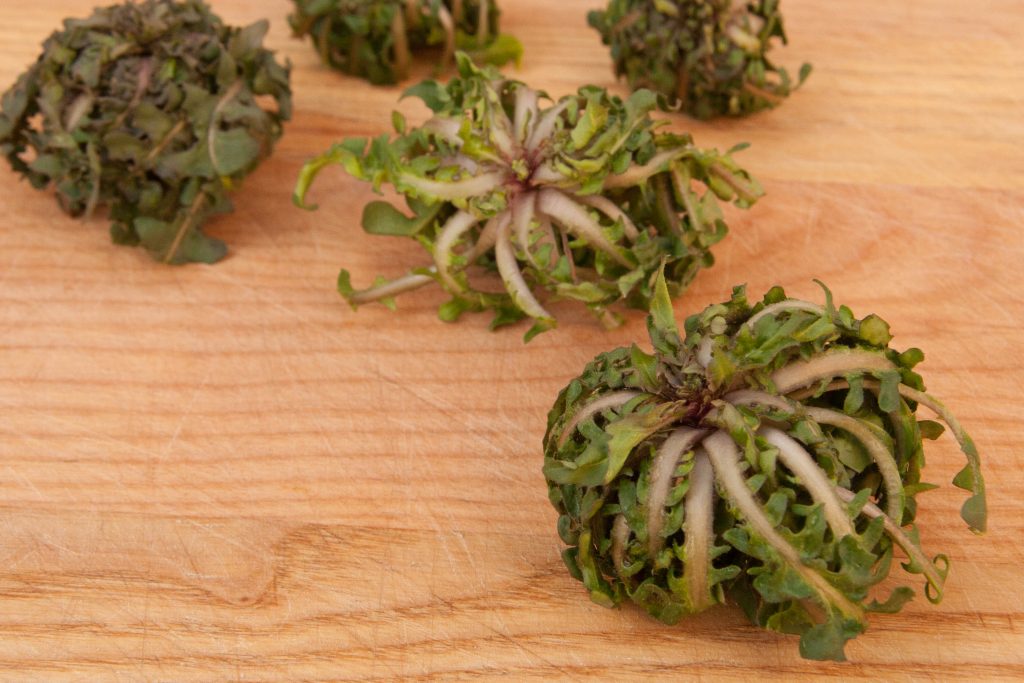
It’s been unseasonably warm and dry here in Santa Fe. Yes, it’s always dry, but usually we get enough snow for a few cross-country treks to Longmire’s cabin and the surrounding caldera. Sigh. On the bright side, I can forage for wild greens in January! So yesterday I dug up some musk mustard from the edge of the yard, and brought it into the kitchen.
Last year I harvested musk mustard in March, when it was in flower. I didn’t realize it might be an evergreen crop, so finding them now, large enough to harvest, was a pleasant surprise. I noticed several differences between the winter and summer crops:
- The texture of the leaves is slightly tougher. Still plenty tender for eating raw in a salad, but definitely thicker and more rigid than the warm weather leaves.
- Winter leaves may be tinged with red. You’ll often see this on plants that hold their foliage over the winter. Bright sun and cold temperatures cause chlorophyll to decline, which lets the other leaf pigments shine through. Anthocyanin is the pigment responsible for red color in leaves. It’s always there, but usually dominated by chlorophyll.
- The leaves within the rosettes are smaller and more tightly clustered in cold weather. Foliage lies flat against the ground, and once picked, the leaves curl downward, under themselves.
I’m fascinated by how the season affects the vegetable. Obsessed as I am with seasonality, it’s interesting to see how a vegetable can be seasonal in more than one season and in very different ways. Each has its virtues…so glad I don’t have to choose.
The rounded shape of the winter rosettes made me think about cooking them whole, as a vegetable, rather than chop up the foliage, which is what I usually do. Not that chopped musk mustard cooked with garlic, lemon juice, and a little yogurt isn’t delicious, because it is. But wouldn’t musk mustard tempura be even better?
That’s a rhetorical question.

Leave a Reply